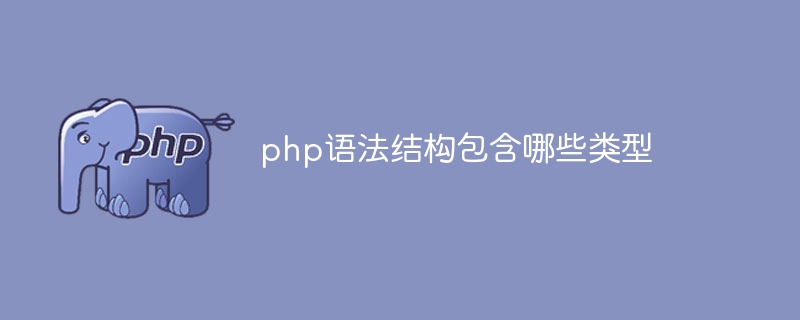
php syntax structure includes tags, comments, variables, data types, operators, control structures, functions, classes and objects. Detailed introduction: 1. Tags. PHP code must be included in specific tags so that the server can recognize and interpret it. PHP tags can be in two forms: short tags and long tags. Short tags are enabled by default in the PHP configuration file. Long tags need to be manually enabled in the PHP configuration file; 2. Comments, text used to explain the code, they will not be executed by the server, there are two types of comments: single-line comments and multi-line comments, etc.

The operating system of this tutorial: Windows10 system, PHP version 8.1.3, DELL G3 computer.
PHP is a widely used open source server-side scripting language for developing dynamic web pages and applications. It has a simple and easy-to-learn syntax structure, allowing developers to quickly build powerful websites and applications. In this article, we will discuss the syntax structure of PHP, including the following aspects:
1. Tags:
PHP code must be included in specific tags so that the server can recognize and interpret it it. PHP tags can be in two forms: short tags ( ) and long tags ( ). Short tags are enabled by default in PHP configuration files, while long tags need to be enabled manually in PHP configuration files.
2. Comments:
Comments are text used to explain the code. They will not be executed by the server. In PHP, there are two types of comments: single-line comments (//) and multi-line comments (/* */). Single-line comments are used to add comments at the end of a line of code, while multi-line comments are used to add comments between multiple lines of code.
3. Variables:
Variables are containers used to store data. In PHP, variables start with the $ sign, followed by the name of the variable. The name of a variable can contain letters, numbers, and underscores, but it must begin with a letter or an underscore. PHP is a weakly typed language, which means that the type of a variable is automatically determined based on the data it is assigned to.
4. Data type:
PHP supports multiple data types, including integer (int), floating point number (float), string (string), Boolean value (bool), array ( array), object and null. Developers can choose the appropriate data type to store and manipulate data according to their needs.
5. Operators:
PHP provides various operators for performing arithmetic, logical and comparison operations. Arithmetic operators are used to perform basic mathematical operations such as addition, subtraction, multiplication and division. Logical operators are used to perform logical operations such as AND, OR and NOT. Comparison operators are used to compare two values for size and equality.
6. Control structure:
The control structure is used to control the flow of the program. PHP provides a variety of control structures, including conditional statements (if-else), loop statements (for, while, do-while) and jump statements (break, continue, return). Developers can use these control structures to execute different blocks of code as needed.
7. Function:
A function is a reusable block of code that performs a specific task. PHP provides many built-in functions such as string processing functions, mathematical functions, and date functions. Developers can also customize functions to reuse specific code logic in their programs.
8. Classes and objects:
PHP is an object-oriented language that supports the concepts of classes and objects. A class is an abstract data type used to define the properties and methods of an object. Objects are instances of a class and can be created by instantiating the class. Object-oriented programming makes code more modular and maintainable.
To summarize, PHP's syntax structures include tags, comments, variables, data types, operators, control structures, functions, classes and objects. Familiarity with these syntax structures will help developers better understand and write PHP code, thereby building powerful websites and applications.
The above is the detailed content of What types does php syntax structure include?. For more information, please follow other related articles on the PHP Chinese website!